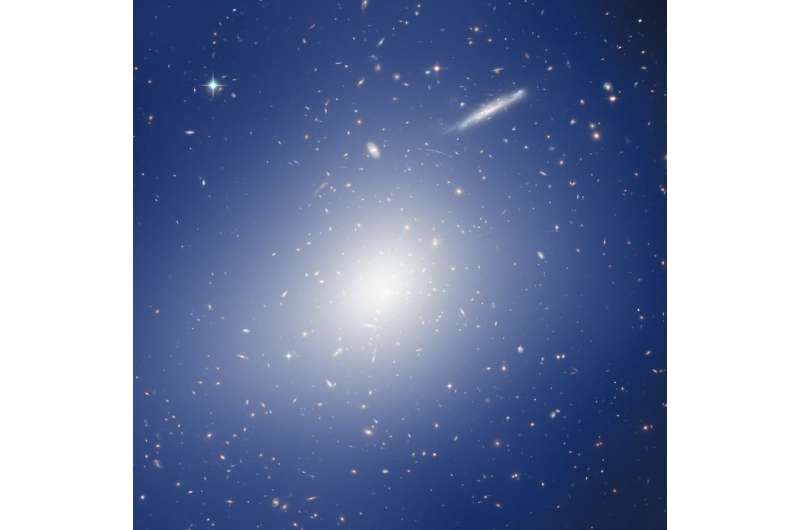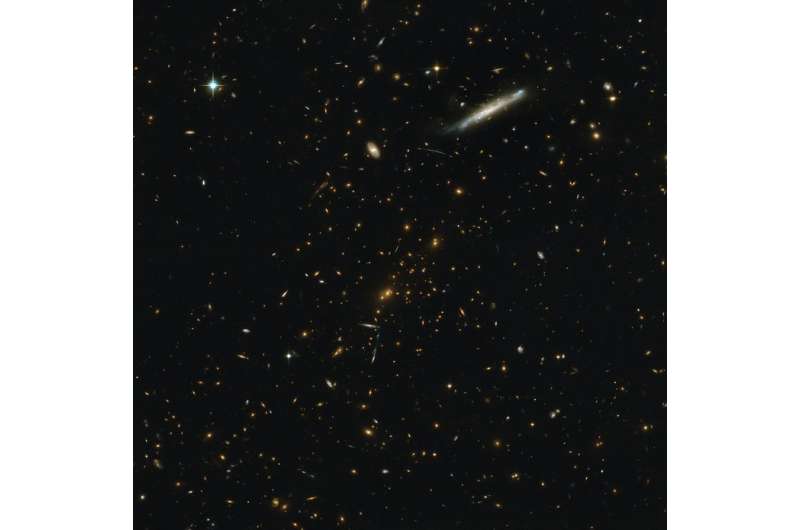Is the cosmic colossus RCS2J2327 heavier than allowed?

An international team of scientists led by researchers from the Argelander Institute for Astronomy has mapped the mass distribution in a distant galaxy cluster (RCS2J2327). This cosmic colossus is located in the constellation Pisces at a distance of approximately 6.4 billion light years. According to current research results it consists of about 85 percent invisible dark matter.
In the center of the image many orange colored galaxies can be seen, which are members of the cluster. In addition, several long arcs are visible. These images of background galaxies have been strongly distorted by gravitational lensing. This effect is similar to that of an optical lens and describes the deflection of light rays in the gravitational field of massive foreground objects. Researchers mapped the resulting image distortion in different parts of the cluster, which allowed them to reconstruct the distribution of the invisible dark matter.
The color image combines observations from the Hubble Space Telescope and the ESO Very Large Telescope (VLT). This combination enabled the precise weak gravitational lensing analysis and mass estimation of the colossus. "For similarly distant objects this is the so far most precise measurement of the weak gravitational lensing effect achieved using ground-based observations", explains Dr. Tim Schrabback from the Argelander Institute for Astronomy at the University of Bonn. Previously, similar constraints could only be achieved with the Hubble Space Telescope, which provided important cross-checks for this study.
According to the results of the study, the mass of this cosmic colossus amounts to about two quadrillion times the mass of the Sun. "This can still be explained within our current standard model of cosmology", reports Schrabback. It is an important result: If the galaxy cluster was heavier than the standard model allows, the scientists would have to search for alternative explanations.

More information: Precise weak lensing constraints from deep high-resolution Ks images: VLT/HAWK-I analysis of the super-massive galaxy cluster RCS2 J232727.7−020437 at z = 0.70. arxiv.org/pdf/1711.00475.pdf
Provided by University of Bonn




















